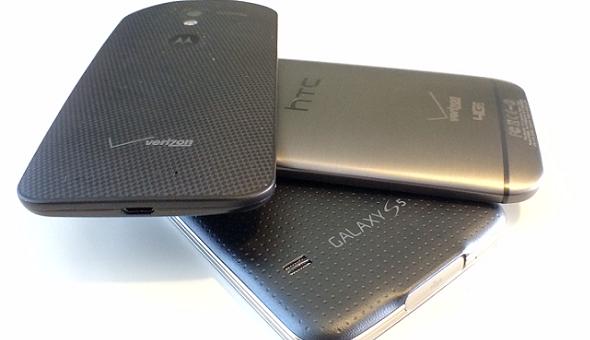Last Updated on April 12, 2017 by Mathew Diekhake
Recognized developer, and hacker Geohot is throwing a celebratory party only this time it won’t be at his house. No, in true geeky fashion it’s for everybody to remain in their own houses, and head to a website where he will be hosting files that give lots of people root access like never before for a precise version of the Galaxy S5. Right now we are hearing so much news about the Galaxy F, or otherwise known as the S5 prime, that it’s refreshing to throw the limelight back into reality and where we know a good handset exists right here. Making matters even better is that its internal memory can now be unchained and opened up for Custom ROM options and much more.
To the average smartphone fan coming up with a way to hack a handset is beyond comprehensible and for that reason it’s hard to explain why this source only works for AT&T and Verizon variants and not any of the other Samsung Galaxy S5 models. But the good news is that popular root specialist Geohot has managed to come up with a way to do exactly that and root the Verizon and AT&T Sammy flagship smartphones.

The news comes from Geohot’s official XDA Developers thread, and it has left hundreds of people leaving happy comments and labeling it the best Father’s Day present ever and we tend to agree. What’s more is the root is very easy to achieve. He then goes on to say that this method most likely will not trip KNOX. When he did it on his own smartphone, it said KNOX WARRANTY VOID: 0x0 which shows the flash bar is taken back to zero. It is useful if something goes wrong with the handset and you want to return it under warranty. If that flash counter trips then the manufacturer will not fix it for you. Remember most countries have warranty that only goes for a period although all of those should still be covered for the remainder of this year because it’s normally at least a 12-month stretch.
The interesting fact with this is that it is also working on other hands and will potentially work on a lot more or even all of them dating back before the 3rd of June this year. The mobiles we know it does work include the Galaxy S4 Active, AT&T and Verizon Galaxy Note 3 and the Google Nexus 5 mobile. Because this Towelroot tool is so new even the developer himself does not know the full extent of this tools power and it has lead him to believe that there is nothing stopping it from unchaining more devices, and it could be many. The real winner here is those who love to customize their devices and get involved with Custom ROMs and extra applications that allow for themes and other goodies such as tweaked performance, but without the hassles of getting there. Yes, many people do enjoy the challenge and the in-depth skill involved in some of the complexities but a lot of people are instantly turned off and would rather the easiest method possible. As time goes on they are getting a lot easier, and this work by Geohot could be the best example of that yet.
Head over to the official website dedicated to this service to use the new tool, click the lambda that then leads to installing the APK and then running the file. What’s more, impressive is that if you are doing this on the Note 3 that it is compatible to use with it will fix a known bug inside the kernel 3.4.0-722276. Most people worry about performance and stability with altering the internal system but in this case it even comes with an advantage!
This procedure is only in its early stages, and Geohot is expecting some bugs. He asks kindly if people report any that they find to him on the thread that is available on the link I provided earlier.
The timing couldn’t be better for Verizon, who are in the news right now for trying to explain how their views again net neutrality help the disabled. They’ve attempted to emphasize that net neutrality doesn’t allow fast lanes, so the blind and deaf have to put up with what the rest of us have. It’s an unfortunate stance on a subject that many feel strongly about like internet activists about having proper rights. Some phone companies try and take it away so they can force addition charges and gain more control over data speeds and how much we pay.
